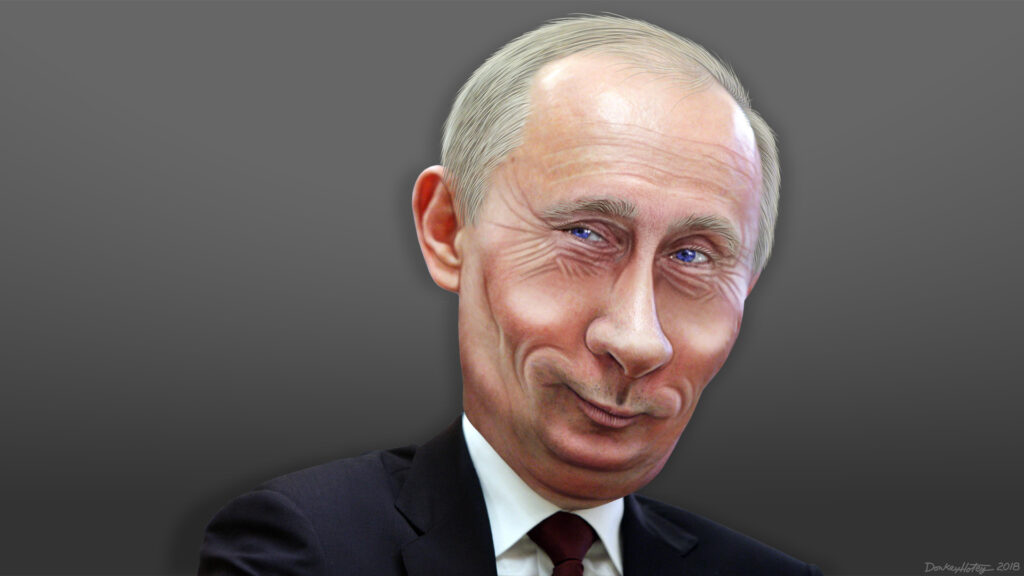If we listen to President Biden, inflation that includes massive record-setting oil and subsequent gasoline prices are the sole responsibility of Russian President Vladimir Putin. It’s as if Putin decided on November 4, 2020, that he had unfettered access to the U.S. economy and that he began dismantling our entire energy system to move the supremacy of energy production on the planet from the U.S. to Eastern Europe.
Does Biden really believe these economic yarns he spins? Is someone else giving him these lines to parrot onstage? Whatever the reasons may be, the lack of true leadership on his part in this energy collapse has actually hastened a problem that did not even need to be a problem.
If truth were known, one could logically conclude that Biden’s entire energy program — which actually is the total dismantling and the ultimate destruction of American energy — was little more than payback to the Green New Deal sycophants that looted the Democrat Party. It’s doubtful he even considered the potential devastation we are living with today.
None of this matters. The only thing that DOES matter is that Biden continues on the road to certain energy destruction with abandonment. Whether he’s parroting someone else’s order or his cheese has slipped off his cracker.
I think the latter is factual.
Our energy crisis is solely on the hands of President Joe Biden and certainly not Vladimir Putin.
The Problem
Ten months ago, Jeremy Siegel issued a dire warning about the trajectory of prices.
“The money supply since the beginning of the pandemic, so a little over a year, has gone up almost 30 percent. Now, that money is not going to disappear. That money is going to find its way into spending and into higher prices,” Siegel, a professor of finance at the University of Pennsylvania’s Wharton School, told CNBC during an interview on May 14. “Over the next two, three years we could easily have 20 percent inflation with this increase in the money supply.”
He was hardly the only one sounding the alarm. A few months earlier, before Congress approved President Joe Biden’s $1.9 trillion American Rescue Plan, several prominent economists had warned that the stimulus bill—the third major one passed since the outbreak of COVID-19 just a year earlier—was too big and threatened to overheat the economy.
Among the critics were people like Lawrence Summers, who served as Treasury Secretary during the Obama administration. “There is a chance that macroeconomic stimulus on a scale closer to World War II levels than normal recession levels will set off inflationary pressures of a kind we have not seen in a generation,” Summers warned in a Washington Post op-ed in February 2021. “Administration officials’ dismissal of even the possibility of inflation, and the difficulties in mobilizing congressional support for tax increases or spending cuts, there is the risk of inflation expectations rising sharply.”
“I think we do not need to spend $1.9 trillion…and we should have a smaller program,” Olivier Blanchard, the former chairman of the International Monetary Fund, wrote on Twitter in response to Summers’ op-ed. Biden’s plan to shovel another $1.9 trillion into the economy was coming on top of unprecedented fiscal stimulus and high personal savings rates (due to the pandemic). Americans were already poised to spend a lot more money chasing the same amount of goods as the pandemic waned, and the increase in demand would require impossible levels of output to match. “Strong inflation” would be the natural result, he warned.
“This would not be overheating,” he wrote. “It would be starting a fire.”
By July, a few months after the American Rescue Plan passed, economists surveyed by The Wall Street Journal said Americans should be bracing for levels of inflation not seen in more than 20 years. That dire prediction was an underestimation.
These are not politically motivated criticisms launched by Republicans who hope to hang high levels of inflation around Democrats’ necks in advance of the midterms. They were sober assessments from mainstream academics and economists, one of whom served alongside Biden in the Obama administration. The White House consistently ignored or downplayed those worries, even as prices ticked upwards throughout the second half of 2021, claiming that rising inflation was a “transitory” problem. By the end of the year, Federal Reserve Chairman Jerome Powell was forced to admit that wasn’t the case.
This history matters because the White House’s latest attempt to explain away inflation rates that have hit their highest levels in 40 years is to blame Russian President Vladimir Putin, and the war he has started in Ukraine, for the whole mess. After the Labor Department released new data last week showing that inflation had jumped to 7.9 percent over the past year, the White House responded with a statement claiming that “today’s inflation report is a reminder that Americans’ budgets are being stretched by price increases and families are starting to feel the impacts of Putin’s price hike.”
The argument is that Russia’s invasion of Ukraine—and the global response to it, which has included cutting off purchases of Russian oil and gas—are pushing prices higher throughout the economy. “Make no mistake, the current spike in gas prices is largely the fault of Vladimir Putin and has nothing to do with the American Rescue Plan,” Biden said Friday.
It’s true that gas prices have spiked dramatically in the weeks since Russian troops invaded Ukraine. But Biden’s attempt to pin a year of steadily rising prices on the events of the past few weeks makes little sense.
For one thing, last week’s report from the Labor Department showing that inflation had hit 7.9 percent looked at prices from February 2021 through February 2022. Putin’s invasion of Ukraine began on February 24, so the White House is asking you to ignore 361 days of data in order to focus on what happened during the last four.
It’s certainly possible that the war in Ukraine—and the disruptions it has caused to global fuel and food supply chains—will put more upward pressure on prices. But that information won’t be visible in the government’s official data until the next consumer price index report is released in early April.
What about Biden’s more narrow claim: that rising gas prices are largely to blame for inflation. It’s true that higher gas prices will push other prices higher as a result—because higher fuel prices make it more expensive to ship anything from place to place. And the White House is correct that energy prices are rising faster than prices overall. Overall energy prices are up 25.6 percent since last year, and gasoline prices are up 38 percent, according to the Labor Department’s most recent data (which, again, captures prices through the end of February).
But if that’s all Putin’s fault, how do you explain the fact that energy prices—and gasoline prices, specifically — had been rising faster than just about anything else for much of the past year? In November, the Labor Department reported that energy prices were up 33 percent and gasoline prices up 58 percent over the previous year. In August, those numbers were 25 percent and 42 percent, respectively. What’s happening here seems to run a lot deeper than the events of the past few weeks.
“Yes, Putin’s invasion is making a huge difference. But demand for gasoline surged much earlier when consumers, with money in the bank and uninterested in flying because of COVID-19 concerns, put family cars on the road in the midst of the great COVID shutdown, making the number of miles traveled in spring 2021 rise to new heights,” wrote Bruce Yandle, former executive director of the Federal Trade Commission and economist at the Mercatus Center, last week in Reason.
Finally, this brings us back around to the economists who were warning last year that Biden’s stimulus bill would be a recipe for high inflation. It’s unlikely that Siegel, Summers, and the rest had a crystal ball that could predict Russia’s invasion of Ukraine.
be a recipe for high inflation. It’s unlikely that Siegel, Summers, and the rest had a crystal ball that could predict Russia’s invasion of Ukraine.
What they were predicting—and, indeed, what we are now seeing—was persistently rising prices due to an excessive amount of money being dumped into the economy. Any attempt by the Biden administration to explain inflation that doesn’t include a hard look at its own policies is simply dishonest.
Conclusion
Honestly, my conclusion is that Joe Biden has precipitously slipped into severe cognitive disability. There’s no other plausible explanation for his actions regarding every part of our economy. When one views his executive actions of which so many abandon the Rule of Law and actually suborn lawlessness, the only conclusion is the President has lost his ability to consider and reason regarding each of the major issues he faces today.
Herein lies the U.S. conundrum of the last century or more: what can we do to right the ship USA? We’ve discussed the various options for change at the top spot. And those options are seriously limited.
The last time we opined with you about this our conclusion was to just “wait it out.” But now the question is “how can we dare wait any longer?” Honestly, I’m confident the ship has sailed from the Biden house. There must be something that can be done within the parameters of the Constitution. I doubt the twenty-fifth amendment would ever be used in this case. So what’s left?
I’ve written this before: it would not surprise me if one day, Jill Biden called Nancy Pelosi and Chuck Schumer and told them Joe was going to have to step down due to “medical reasons.” That would give President Biden a way to bow out gracefully.
Then the BIG question must be answered: “Can Vice President Harris handle the job?” The answer to that question is obviously, “No.”
THEN we have a REAL problem for which I have NO solution.

